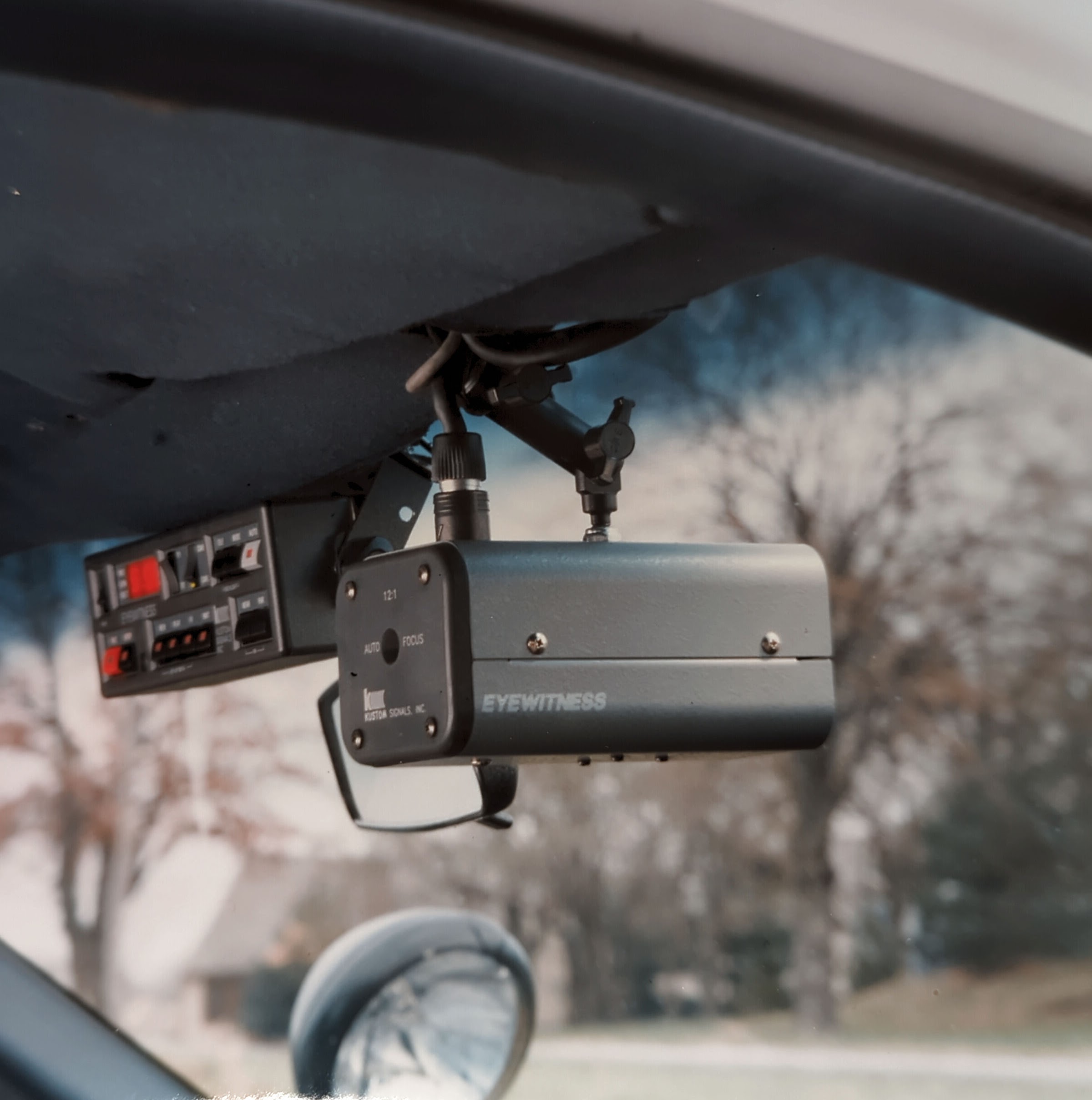The dash cam, onboard camera, car DVR, and event data recorder (EDR) are all terms you may know for what has become a revolutionary device—the in-car video. The dash cam market has exploded in the last few years. Reports show that in 2021 the global dashboard camera market had tipped over the three billion dollar (USD) mark. Growth is not slowing down as these in-car video recorders play an integral role for industries such as law enforcement and insurance. Commercial and personal usage has increased as well.
Because of modern technology, the dash camera can help:
- Deter further criminal activity
- Improve conviction rates
- Reduce fraudulent claims
- Aid in law officer training
- Increase safety and situational awareness
But where did it all begin? Let’s take a look at the history of the in-car video device and how it’s evolved through the decades.
Vancouver, Canada: 1907
In 1907, a filmmaker from Toledo, Ohio shot what has become known as the first “dash cam” footage. William Harbeck, who had filmed the aftermath of the horrific San Francisco earthquake the year prior, was hired by the Canadian Pacific Railways Department of Colonization to shoot promotional footage of Canada. What he captured is now history.
Harbeck used a hand-crank camera in 1907 to record moving footage of everyday life along a Vancouver street. He set up the camera on a streetcar and shot film of the busy neighborhood. Tragically, William Harbeck died when the Titanic sank. He’d been aboard to document the ship’s launch and voyage.
New York: 1926
On April 24, 1926, a camera was mounted to the car that took Fire Chief John Kenlon from the Brooklyn Fire Department to a blaze at a warehouse fire on East 123rd Street. The camera on the hood of Kenlon’s vehicle recorded the call-out from start to finish.
California: 1939
We jump more than a decade to the end of the 1930s and head to California for what is considered the first police dash cam footage. In 1939, California Highway Patrol Officer R.H. Galbraith mounted a motion-picture camera on his patrol car’s dashboard. The lens pointed forward looking out through the windshield to capture moving pictures of the vehicles he’d follow along the highway. Officer Galbraith used the recorded film as potential traffic violation evidence to later be used in court.
NOTE: Some historians also credit H.C. Fairchild, of Washington DC, as an inventor of the first “windshield camera” designed to assist local law enforcement.
Connecticut: 1968
The October 1968 issue of Popular Mechanics magazine features an article: “Watch It! You’re on Trooper TV” by E.D. Fales, Jr. The article spotlighted the Connecticut State Police as the first state police agency to try using video footage on actual traffic conditions as the incidents of tailgating, improper lane-switching, and other dangerous driving had increased, making roadways unsafe.
Fales met with one of the state troopers, Sergeant Nelson Hurlburt, and described the camera set-up in detail in the article. A small television camera was mounted on top of Sergeant Hurlburt’s patrol car’s dashboard. In the backseat was a videotape recorder and a small TV screen. Sergeant Hurlburt had a small microphone on a cord around his neck, which he could switch on and off.
The state trooper stated he typically kept the set-up rolling while on duty. It had a run-time of about thirty minutes, so it had to be rewound and re-used. The camera lens needed to be adjusted three times a day for lighting, and it recorded easily in the dark. Sergeant Hurlburt could swivel the camera with one hand while driving to get a better angle when capturing dangerous driving on film. He’d call out speed infractions into the microphone as well.
Ohio: 1988
In May 1988, the first police car chase was captured from start to finish by a Berea, Ohio Police Department detective’s dashcam. The chase reached speeds of 120 mph and the suspects were caught after the pursuit—and it was all caught on camera.
These moments in history are pinnacle points for in-car video and the evolution of its usage. It’s easy to see how essential having real-time video and audio footage of pursuits, incidents, and accidents can be for law enforcement.
Kustom Signals Offers Industry Leading In-Car Speed Enforcement Technology
You already know Kustom Signals as an industry leader in high-performance in-car radar and BWCs. We are always working toward advancing tools for the industry. We have recently introduced our latest innovation, Argus ICV In-Car Video
Argus ICV’s HD Dual View Camera allows for the capture of both a wide angle and telephoto 1080p views simultaneously. The telephoto lens can be physically pivoted to capture important moments and provide an enhanced live view for the user. The HD Interior Camera can be mounted wherever is most convenient thanks to its wide view. The infrared can be used to make sure that nothing is missed.
The Argus ICV’s Android-powered tablet allows for the convenient review and classification of footage. Easily view multiple feeds or focus in on a single camera to view the live feed or review footage to see what exactly was caught on camera.
An additional advantage of Argus ICV is its ability to integrate with Argus Body Worn Camera and Argus Data Vault.
Kustom Signals remains your leader for in-car technology solutions and innovative speed enforcement technology. You can also count on our team to go beyond expectations in customer service and support. To explore our selection of high-quality products with industry-first features, contact us today.

